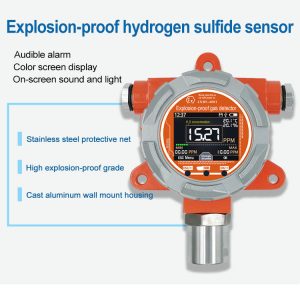Gas sensors are invaluable tools that play a crucial role in detecting and analyzing various gases present in our environment. From ensuring safety in industrial settings to monitoring air quality, gas sensors have seen significant advancements in recent years. This article explores the latest innovations in gas sensor technology, highlighting the improvements in detection capabilities, analysis techniques, and their diverse applications across different sectors.

Enhanced Sensing Technologies:
Gas sensors have witnessed remarkable advancements in terms of sensing technologies, leading to improved detection capabilities. Traditional sensing methods, such as electrochemical sensors, have been enhanced to provide greater accuracy, sensitivity, and selectivity. Additionally, new cutting-edge technologies, including metal oxide semiconductor (MOS) sensors, infrared spectroscopy, and photoionization detectors (PID), offer enhanced performance in detecting specific gases, such as volatile organic compounds (VOCs) and hazardous substances.
Miniaturization and Portability:
One notable trend in gas sensor innovation is the miniaturization and portability of these devices. Miniature sensors allow for easy integration into wearable devices, mobile phones, and IoT platforms. This advancement enables personal exposure monitoring, where individuals can continuously assess the quality of the air they breathe and take necessary precautions to protect their health. The portability of gas sensors also facilitates on-field measurements, making it convenient for researchers, industrial professionals, and environmental experts to conduct real-time gas analysis in various locations.
Selectivity and Cross-sensitivity Reduction:
An essential aspect of gas sensor technology is its ability to detect specific gases accurately while minimizing cross-sensitivity to other compounds. Innovations in gas sensor design have focused on enhancing selectivity by incorporating advanced materials, coatings, and functionalization techniques. These developments help reduce false readings caused by interference from other gases and improve the reliability of gas detection systems. Selective gas sensors contribute to more precise analysis and decision-making in critical applications, such as industrial safety and environmental monitoring.
Wireless Connectivity and IoT Integration:
Emerging trends in gas sensor technology include wireless connectivity and integration with the Internet of Things (IoT). These advancements enable seamless communication between gas sensors and data management systems, facilitating real-time monitoring and remote access to gas concentration data. With IoT integration, gas sensors can be interconnected and deployed in networks, enabling comprehensive coverage of large areas and prompt detection of gas leaks or environmental pollution. This connectivity allows for centralized data analysis, visualization, and advanced analytics, enhancing the efficiency and effectiveness of gas detection systems.
Data Analysis and Machine Learning:
The availability of high-resolution gas concentration data generated by advanced gas sensors has paved the way for sophisticated data analysis techniques. Machine learning algorithms can analyze large datasets and identify complex patterns, correlations, and anomalies in gas concentrations. These algorithms, when trained on vast amounts of data, can provide predictive insights, aiding in proactive gas leak detection, pollution source identification, and optimization of industrial processes. The integration of data analysis and artificial intelligence-based methods with gas sensor technology enables more accurate and efficient gas detection and analysis.
Applications Across Different Sectors:
Gas sensor innovations have found diverse applications across various sectors. In industrial settings, gas sensors are vital components of safety systems, detecting the presence of toxic or combustible gases and triggering alarms or safety protocols. In environmental monitoring, gas sensors help assess air quality, measure greenhouse gas emissions, and identify pollutant sources. They also play a role in healthcare, where they monitor and control the air quality in hospitals, laboratories, and cleanrooms. Moreover, gas sensors find applications in agriculture, detecting harmful gases emitted from fertilizers or animal waste, ensuring the well-being of crops and livestock.
Conclusion:
Gas sensor innovations have revolutionized the field of gas detection and analysis, facilitating improved safety, environmental monitoring, and healthcare practices. Advancements in sensing technologies, miniaturization, selectivity, wireless connectivity, and data analysis techniques have significantly enhanced the performance of gas sensors. These devices play a critical role in various sectors, enabling proactive measures to mitigate hazards, reduce pollution, and protect human health. As technology continues to advance,
 : +86 155 8830 2704
: +86 155 8830 2704 : jxdziot@gmail.com
: jxdziot@gmail.com
